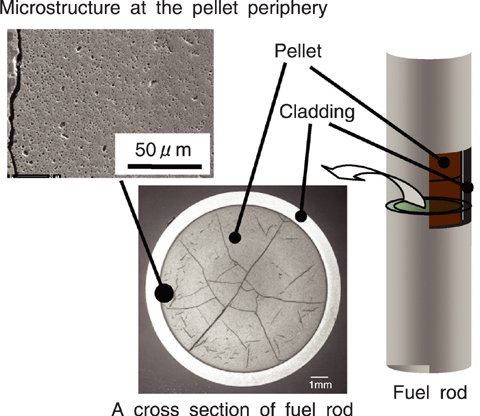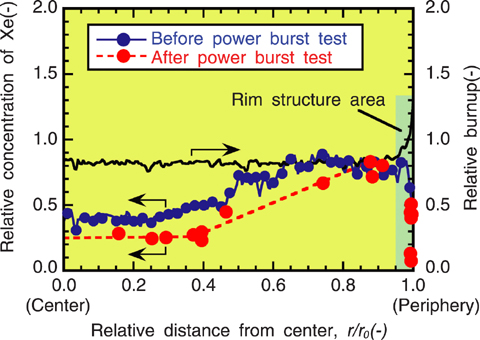
Fig.5-5 Crystal structure of fuel pellet before power burst test

Fig.5-6 Comparison of radial Xe concentration profiles
Extending the utilization period of reactor fuel, i.e. burnup extension, is progressing in stages, for the efficient use of natural resources and the reduction of fuel cycle cost. With increase in fuel burnup, more fission products accumulate in the fuel pellet, and cladding corrosion worsens. Accordingly, fuel safety with high burnup must be confirmed under accident conditions as well as under normal operation conditions.
At the periphery of a high burnup pellet, the microstructure is different from that at the time of pellet fabrication (Fig.5-5).This microstructure is called rim structure, and high pressure fission gas is accumulated in the bubbles generated in this region. In the case that the accumulated fission gas is released during a reactivity initiated accident (RIA), pellet temperature increase and the cladding deformation which is caused by additional fission gas release would occur due to the degradation of the heat conduction between pellet and cladding. These phenomena may affect the fuel rod safety. Consequently, the investigation of the effect of rim structure formation on fission gas release behavior under an RIA is an important subject of study.
A test rod was prepared from a fuel rod with high burnup after use in a commercial reactor, and power burst tests simulating a RIA were carried out at the NSRR with the test rod. In one of the post irradiation examinations (PIEs), the amount and composition of the fission gas released during the power burst test were investigated. Fig.5-6 shows the radial concentration profile of fission gas (Xe) which was measured by electron probe micro analysis (EPMA). Comparing the data obtained after power burst test with those before power burst test, it is seen that the Xe concentration decreased in the region between the center and mid radius region, while it hardly changed at all at the pellet periphery where the rim structure formed. The amount of the fission gas released during the power burst test can be evaluated from the difference of the Xe concentration before and after the test, shown in Fig.5-6, and this evaluated value is comparable with the value obtained from the PIE. In consideration of the grain boundary separation which was observed in the mid-radius region, it is found that most fission gas was released from the grain boundary in the mid-radius region, and that fission gas in the rim structure was hardly released at all during the power burst test.
The result of this study shows that the amount of fission gas released during a RIA is barely affected at all by rim structure formation, important information for analyzing fuel behavior during a RIA.